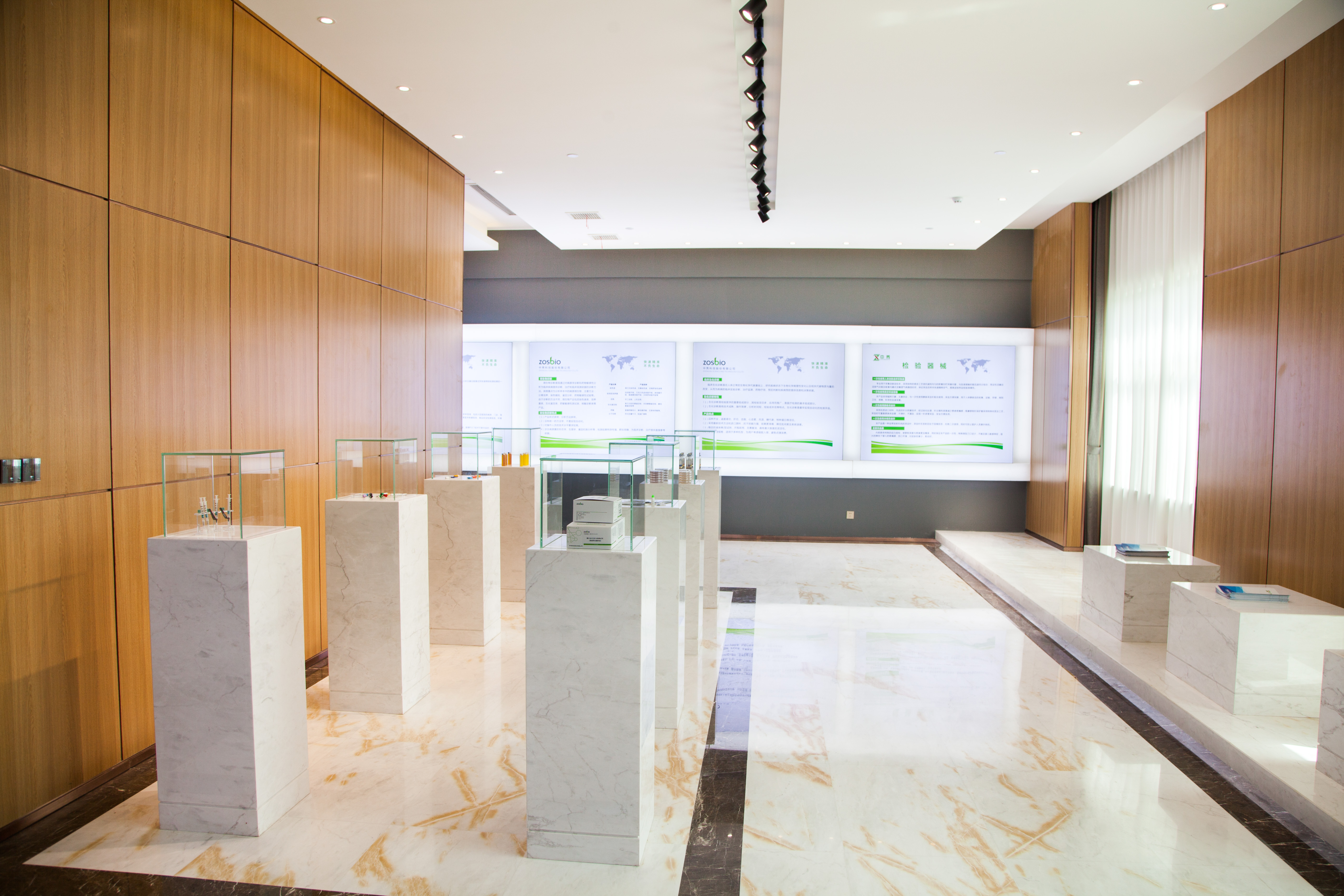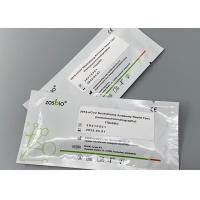2-30 ℃ for 12 months.
The validity period of aluminum foil is 1 hour after opening.
Configuration number: see label for details.
Deadline: please refer to the label for details.
Sample Requirements
1. Collect serum, plasma or whole blood samples.
2. Precipitates and suspended matter in the sample affect the
experimental results and must be removed by centrifugation.
3. Anticoagulant: The use of anticoagulants such as jellyfish skin,
EDTA and sodium citrate has little effect.
4. Blood collection should be done by a medical professional.
Priority is given to serum / plasma tests. In emergencies and
special cases, the patient's entire blood sample can be used for
rapid testing.
5. The storage time of serum and plasma samples at room temperature
should not exceed 8 hours. It can be stored at temperatures between
2 ° C and 8 ° C for 6 months, 5 days or shorter, up to 20 ° C, but
repeated freeze-thaw cycles should be avoided. The freezing time of
whole blood specimens should be 48 hours to 8 ° C or less.
Test Method
Please read the guide carefully before the exam. Allow all study
agents to cool to room temperature before testing. The test should
be conducted at room temperature.
1. Remove the test card from the test pack and use it within 1
hour.
Add the sample to the buffer solution (about 2 μl) and add the
sample to the buffer solution (about 2 μl).
3. Reaction time at room temperature is 10 to 15 minutes. After 20
minutes, the result was invalid.
Interpretation of Test Results

Result judgment chart of test card:
1. Invalid result: There is no response line on the quality control
line (C line). The test is invalid and needs to be re-experimented.
2. Negative result: Red streaks appear on the test line (t line),
and the color development rate is higher than that of the control
line (r line), quality control line (C line), and control line (r
line).
3. Positive result: There is no red belt in the test line (t line),
or there is a red belt in the test line (t line), but the color
development rate is lower than that of the control line (r line)
and the quality is deteriorated. Control line (C line) and control
line (r line).
Limitation of Test Method
1. This device is used only for in vitro diagnosis.
2. Appropriate amount of sample must be added to perform the test.
Too many or too few samples will result in inaccurate results.
3. Hemolysis, blood fats, jaundice, and contaminated samples can
affect test results and should be avoided.
4. Reagent test results are for clinical reference only and cannot
be the sole basis for clinical diagnosis and treatment. The final
diagnosis of this disease must be based on a comprehensive
assessment of all clinical and laboratory results.
Product Performance Indicators
1. Specificity analysis
1.1 cross reaction: the following types of antibody evaluation were
conducted for interference with reagents, and no cross reaction
occurred.
| SN | Item | Cross reaction | SN | Item | Cross reaction |
| 1 | Endemic human coronavirus OC43 | No | 10 | Enterovirus | No |
| 2 | Endemic human coronavirus HKUI | No | 11 | EB virus | No |
| 3 | Endemic human coronavirus NL63 | No | 12 | Measles virus | No |
| 4 | Endemic human coronavirus 229E | No | 13 | Human cytomegalovirus | No |
| 5 | Influenza A virus | No | 14 | Rotavirus | No |
| 6 | Influenza B virus | No | 15 | Norovirus | No |
| 7 | Respiratory syncytial virus | No | 16 | Mumps virus | No |
| 8 | Adenovirus | No | 17 | Varicella-zoster virus | No |
| 9 | Rhinovirus | No | 18 | Mycoplasma pneumoniae | No |
1.2 Interfering substances: The new coronavirus (2019 ncov)
neutralizing antibody test item evaluates the potential
interference of the following substances by adding the following
substances to a sample of a specific concentration. As a result, it
was clarified that each interfering substance did not interfere
with the detection result of the reagent.
| Interfering substances | Concentration | Interfering substances | Concentration |
| Bilirubin | ≤50mg/dL | Triglycerides | ≤15mmol/mL |
| Hemoglobin | ≤5g/L | Cholesterol L | ≤500mg/d |
| Rheumatoid factor | ≤500IU/mL | Human total IgG | ≤14mg/mL |
| Ribavirin | 0.4mg/mL | Fluticasone | 0.5mg/mL |
| Oxymetazoline | 10mg/mL | Dexamethasone | 5 mg/mL |
| Histamine hydrochloride | 10mg/mL | Triamcinolone acetonide | 5mg /mL |
| Tobramycin | 1mg/mL | Levofloxacin | 0.2 mg/mL |
| Oseltamivir | 1mg/mL | Azithromycin | 0.1 mg/mL |
| Zanamivir | 1mg/mL | Ceftriaxone | 0.4 mg/mL |
| Arbidol | 0.5mg/mL | Meropenem | 0.2 mg/mL |
2.Clinical study: 120% positive and 300 negative samples were
selected from Novell coronavirus (2019 nCoV) IgG test reagents
(colloidal gold method) as controls. The results are summarized
below.
| 2019-nCoV IgG Ab detection reagent (colloidal goldmethod) |
Sum |
| Positive | Negative |

| Positive | 115 | 5 | 120 |
| Negtive | 5 | 295 | 300 |
| Sum | 120 | 300 | 420 |
| Sensitivity | 95.83%, (95%CI: 90.62%~98.21%) |
| Specificity | 98.33%, (95%CI: 96.16%~99.29%) |
Precautions
1. This product is used only for in vitro diagnosis.
2. This product cannot be used after it has been built.
3. Before you start, please read the operation manual carefully and
experiment according to the reagent manual.
4. Do not conduct experiments in adverse environments such as
disinfectants, sodium hypochlorite, alkali acid, acetaldehyde,
other corrosive gases and dusty environments. After the experiment
is over, the laboratory must be disinfected.
5. All samples and reagents used are considered potential
contagious substances and should be disposed of in accordance with
local regulations.
6. Reagents must be used within the expiration date indicated on
the packaging. Use the sensor card to remove it from the aluminum
foil bag as soon as possible to prevent moisture.
Company profile
Zhongxiu Science And Technology Co.,Ltd., is a high-tech enterprise
engaged in the research and development, production and operation
of in vitro diagnostic products. The in vitro diagnostic products
developed by the company cover POCT series, microbial series,
biochemical series and immune series reagents and supporting
instruments.
The company has always adhered to the core concept of "fast and
accurate, living up to life", committed to providing society with
excellent products and services, and contributing to the cause of
human health.












